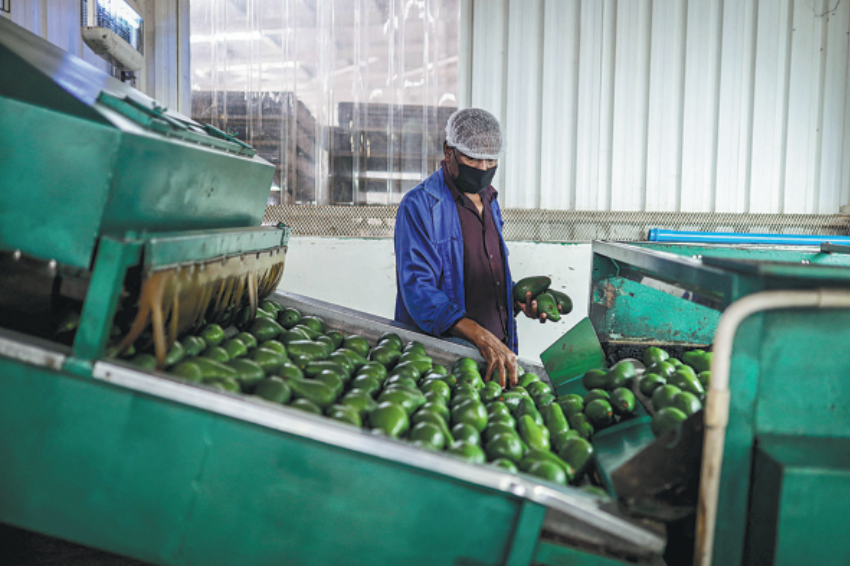Think tank PIIE revises down forecast for US economic growth to 5.7 pct in 2021


WASHINGTON - The US gross domestic product (GDP) is on track to grow by 5.7 percent this year, lower than the previous projection of 6 percent, according to the Peterson Institute for International Economics (PIIE)'s semiannual Global Economic Prospects released Tuesday.
US core inflation is projected to diminish to 2.5 percent by the end of next year, after reaching nearly 4 percent at the end of this year, PIIE Senior Fellow Karen Dynan, former assistant secretary for economy policy and chief economist at the US Treasury Department, told reporters at a virtual briefing, noting that "temporary factors" are going to recede slowly.
PIIE President Adam Posen, meanwhile, said he is expecting three quarters of percent higher inflation than Dynan's projection, forecasting core personal consumption expenditures (PCE) of 3.25 percent for 2022.
"My difference with her is in interpretation of the labor market that I think the structural changes are going to be more disruptive," Posen said, while adding that there are "big bands of uncertainty" around the projections.
Data from the Labor Department showed that US employers added fewer-than-expected 235,000 jobs in August, indicating a marked slowdown in job growth amid a Delta variant-fueled COVID-19 surge, with unemployment rate falling slightly by 0.2 percentage point to 5.2 percent.
Dynan projects that US unemployment rate will decline to 4.8 percent in the fourth quarter of 2021 and end 2022 at 4 percent.
In her latest forecast, Dynan pointed to five key economic factors that are shaping the outlook in the United States: ample household financial resources that will keep consumer demand high; a gradual retreat of supply chain problems and bottlenecks; a slow return of working-age individuals to the labor force; partial offset of waning stimulus by new fiscal measures; and a slightly earlier tightening of monetary policy than what the Federal Reserve currently expects.
She noted that she worries about any kind of event that could rock financial markets and cause asset prices to decline sharply, such as the debt ceiling crisis.
"I think the biggest kind of concern along those lines is just that the Fed will need to move more aggressively and they'll have to pivot faster than they currently think that they'll need to pivot. And that could really kind of upset financial markets," Dynan said.
US President Joe Biden on Monday urged the Congress to raise the debt limit, lashing out at Republicans for threatening to use their power to block Democrats' efforts, as the debt ceiling impasse awaits a solution.
Biden said Republicans are threatening to use a procedural power called the filibuster, which means Democrats would need to get 60 votes - instead of a simple majority - to increase the debt limit in a 50-50 split Senate.
In a letter to the president on Monday, Senate Minority Leader Mitch McConnell, however, reiterated that his party won't help Democrats on the issue, complaining about Democrats' lack of bipartisanship in crafting major legislations.
A House vote on the 1.2 trillion-US dollar bipartisan infrastructure plan, a top priority of Biden, has been delayed as Democrats have been struggling to reach consensus within the party on the size of the massive social spending plan.
Progressives have been seeking to approve a 3.5 trillion dollars package, while moderates such as Senator Joe Manchin of West Virginia have raised concerns about the potential cost of the package, and recently put forward a figure of 1.5 trillion dollars.
Big spending increases are being discussed, but the final numbers will be "much smaller," Dynan said, noting that there will be a partial tax offset, and the amounts will be spent over 10 years. PIIE's forecast assumes 150 billion dollars in net new stimulus.
According to the semiannual forecast, the United States is leading the other large advanced economies in its economic recovery after an early start on vaccination and an aggressive fiscal response to the pandemic.
The global economy will expand 5.6 percent in 2021 and 4.9 percent in 2022, the projection showed.
As has been the case since the beginning of the pandemic, growth prospects in China have been the brightest among the large emerging-market economies, Dynan noted. PIIE projects Chinese economy to grow by 7.8 percent this year, followed by 6.6 percent growth in 2022.
China needs to rely more on productivity for future growth, as returns on capital and working age population are in decline, he added.

































